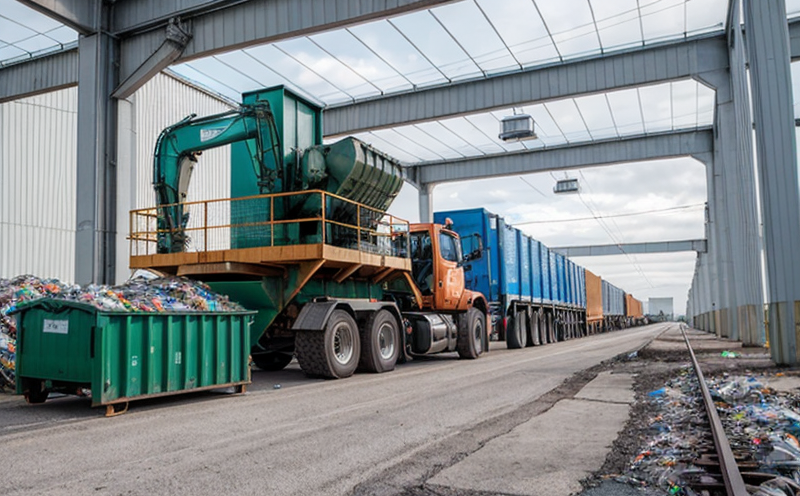ASTM D8177 Aluminum Recycling Efficiency Testing
ASTM D8177 Aluminum Recycling Efficiency Testing is a critical procedure used to evaluate the efficiency of aluminum recycling processes. This standard ensures that recycled aluminum retains its purity and meets specified quality parameters, which are essential for maintaining the performance characteristics required in end products such as automotive parts, building materials, and packaging.
The ASTM D8177 test focuses on determining the amount of impurities present in recycled aluminum. By analyzing these impurities, manufacturers can assess how effectively their recycling processes separate valuable metal from non-recyclable material. This testing helps ensure that recycled aluminum adheres to stringent quality control standards set by international bodies like ISO and ASTM.
Understanding the efficiency of your recycling process is crucial for several reasons:
- Economic Benefits: Efficient recycling processes reduce costs associated with raw material procurement, waste disposal, and energy consumption.
- Environmental Impact Reduction: Recycling aluminum uses significantly less energy than producing new aluminum from bauxite ore. Ensuring high efficiency minimizes the carbon footprint of your operations.
- Product Quality Assurance: Maintaining purity levels ensures that recycled aluminum can be used in applications where its properties are critical, such as aerospace components or medical equipment.
- Regulatory Compliance: Many jurisdictions have regulations requiring industries to recycle a certain percentage of their materials. Testing helps ensure compliance with these mandates.
The ASTM D8177 protocol involves several key steps:
- Sample Preparation: Recycled aluminum samples are collected and prepared according to specified guidelines to ensure accurate testing results.
- Analytical Methods: Various analytical techniques are employed, including X-ray fluorescence (XRF), inductively coupled plasma mass spectrometry (ICP-MS), and atomic absorption spectroscopy (AAS). These methods allow for precise measurement of trace elements and impurities.
- Data Interpretation: Results from the analysis are compared against established thresholds to determine compliance with industry standards. Compliance indicates that the recycling process has been effective in removing unwanted materials while preserving the integrity of the aluminum.
Understanding the intricacies of ASTM D8177 is vital for industries involved in aluminum recycling, as it directly influences product quality and sustainability efforts. Regular testing ensures continuous improvement of recycling processes, leading to higher-quality recycled products and reduced environmental impact.
Quality and Reliability Assurance
To ensure the reliability and accuracy of ASTM D8177 Aluminum Recycling Efficiency Testing, several key factors must be addressed:
- Instrument Calibration: Regular calibration of equipment such as XRF analyzers ensures consistent measurement results.
- Standard Operating Procedures (SOPs): Strict adherence to SOPs guarantees that all tests are conducted under controlled conditions, minimizing variability in outcomes.
- Data Verification: Independent verification of test data through replicate measurements or alternative testing methods enhances confidence in the results.
- Training and Certification <|im_start|>⚗





